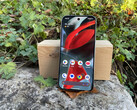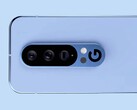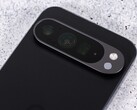
Google Pixel 9 Pro smartphone review - The compact flagship with great cameras
Mini AI powerhouse.
Small and yet with even more stamina, a much brighter display and even more AI: The 6.3-inch Pixel 9 Pro can do a lot more than its predecessor and in this test, it proved itself worthy of being classed as one of the best compact smartphones currently on the market. Unfortunately, it isn't entirely without its weaknesses.Manuel Masiero, 👁 Daniel Schmidt (translated by Daisy Dickson) Published 🇩🇪 🇫🇷 ...
Verdict on the Google Pixel 9 Pro
The Google Pixel 9 Pro belongs to the best compact smartphones that are currently on the market. Its cameras attest to its strong overall package, offering very good image quality and covering all shooting scenarios from macro to telephoto. The Pixel 9 Pro's high-quality build, bright OLED panel, long battery life, plethora of practical AI features and 7 years of updates are also very attractive features. In addition, its communication features leave nothing to be desired as the phone supports NFC, UWB, WiFi 7 and plenty of cellular frequencies.
Unfortunately, the Pixel 9 Pro's performance is rather average due to its comparatively slow Google Tensor G4 and its UFS-3.1 storage also means it can't keep up with other flagship phones on the market. It's a shame that the entry-level storage variant again only comes with 128 GB of storage, as this is simply no longer up-to-date in 2024. We also have to criticize its slow charging speed of 27 watts at best because, although it protects the phone's battery, it may also test your patience a little.
Pros
Cons
Price and availability
You can purchase the Google Pixel 9 Pro via most major online retailers such as Amazon, where it currently costs $987.99.
Possible alternatives compared
Image | Model / Review | Geizhals | Weight | Drive | Display |
|---|---|---|---|---|---|
| Google Pixel 9 Pro Google Tensor G4 ⎘ ARM Mali-G715 MP7 ⎘ 16 GB Memory, 128 GB | 199 g | 128 GB UFS 3.1 Flash | 6.30" 2856x1280 495 PPI OLED | ||
| Apple iPhone 16 Pro Apple A18 Pro ⎘ Apple A18 Pro GPU ⎘ 8 GB Memory, 128 GB NVMe | 199 g | 128 GB NVMe | 6.30" 2622x1206 460 PPI Super Retina XDR OLED | ||
| Google Pixel 8 Pro Google Tensor G3 ⎘ ARM Mali-G715 MP7 ⎘ 12 GB Memory, 128 GB | Listenpreis 1099€ | 213 g | 128 GB UFS 3.1 Flash | 6.70" 2992x1344 490 PPI OLED | |
| OnePlus 12 Qualcomm Snapdragon 8 Gen 3 ⎘ Qualcomm Adreno 750 ⎘ 16 GB Memory, 512 GB | 220 g | 512 GB UFS 4.0 Flash | 6.82" 3168x1440 510 PPI AMOLED | ||
| Samsung Galaxy S24+ Samsung Exynos 2400 ⎘ Samsung Xclipse 940 ⎘ 12 GB Memory, 512 GB | 196 g | 512 GB UFS 4.0 Flash | 6.70" 3120x1440 513 PPI AMOLED | ||
| Xiaomi 14T Pro MediaTek Dimensity 9300+ ⎘ ARM Immortalis-G720 MP12 ⎘ 12 GB Memory, 1024 GB | 209 g | 1 TB UFS 4.0 Flash | 6.67" 2712x1220 446 PPI AMOLED |
Table of Contents
- Verdict on the Google Pixel 9 Pro
- Specifications
- Case - 6.3 inches and IP68-certified
- Connectivity - The Google smartphone with a UWB chip and an IR thermometer
- Software - Android 14 and 7 years of updates for the Pixel 9 Pro
- Communication and GNSS - Speedy WiFi 7 and good GPS
- Telephone features and call quality - The Pixel 9 Pro with eSIM support
- Cameras - The Google Pixel 9 Pro with a powerful triple camera and 8K videos
- Accessories and warranty - The Google smartphone without a power supply
- Input devices & operation - LTPO OLED panel at 120 Hz on the Pixel 9 Pro
- Display - Super bright tandem OLED inside the Pixel 9 Pro
- Performance - The Google Tensor G4 places its focus on AI
- Emissions - Dual speakers inside the Pixel phone
- Battery life - More stamina than its predecessor despite a smaller battery
- Notebookcheck total rating
The Google Pixel 9 Pro is the successor to the Pixel 8 Pro. Although not much has changed about its overall design, its size has shrunk from 6.7 inches to 6.3 inches. This makes the Pixel 9 Pro the exact same size as the Pixel 9 and in turn, one of the most compact high-end smartphones currently on the market. The largest Pixel smartphone at the moment is the Pixel 9 Pro XL.
Our test candidate has been given a bit more performance compared to its predecessor thanks to its Google Tensor G4, and its new tandem-OLED panel makes it shine even brighter. Although its battery has shrunk ever so slightly from 5,050 mAh to 4,700 mAh, our test revealed that the Pixel 9 Pro possesses even more stamina than the Pixel 8 Pro.
Google hasn't changed anything about the phone's price. We tested the entry-level version which still features 128 GB of storage. Google charges $999 for this, so the same as the Pixel 8 Pro.
Specifications
Case - 6.3 inches and IP68-certified
The Google Pixel 9 Pro's build quality is impressive and its IP68 rating gives it effective protection against water and dust. The front and back of the smartphone are protected by a pane of Gorilla Glass Victus 2 each, and are joined together by a polished metal frame. The back cover has a high-quality feel with its silk-matte surface finish. The coating also makes the back largely immune to fingerprint marks.
Our test device features the colorway Hazel (dark gray). There are three further color variants of the phone available, namely Porcelain (light beige), Rose Quartz and Obsidian (black).
Connectivity - The Google smartphone with a UWB chip and an IR thermometer
Google offers the Pixel 9 Pro in 128, 256 and 512 GB UFS 3.1 storage variants, each with 16 GB of RAM. Our 128 GB test device costs $999 via the Google Store. The internal storage can't be expanded.
In addition to NFC and Bluetooth 5.3, the Pixel 9 Pro supports Miracast and Google Cast. The in-house Titan M2 chip helps securely store passwords and user data. Unlike the Pixel 9, the Pro model has a UWB chip and an IR thermometer.
The phone's OTG-ready USB port is connected according to the USB 3.2 Gen 1 standard and should therefore theoretically ensure transfer rates of over 250 MB/s. However, using our external Samsung PSSD T7 SSD, the USB port only managed a meager 180.1 MB/s during the copying test. Our usual SSD setup with the Samsung 990 Pro wasn't recognized as storage, which is probably due to the fact that the USB port couldn't provide enough output voltage for this.
Software - Android 14 and 7 years of updates for the Pixel 9 Pro
According to the manufacturer, the pre-installed Android 14 will receive OS upgrades and security updates for 7 years. The latter are rolled out monthly. At the time of testing (end of November), the smartphone had already been upgraded to Android 15.
AI is at the heart of the current Pixel generation. As a result, it is no surprise that the Pixel 9 Pro also comes equipped with AI features such as Circle to Search and the Gemini smart assistant. The Pro model also includes Gemini Advanced and 2 TB of cloud storage for 1 year free of charge.
Sustainability
Google not only places great importance on sustainability through its long update period, but also through its choice of materials. According to the manufacturer's sustainability report, 32 grams of the smartphone's total weight of 199 grams consists of 100% recycled aluminum. Ten of the Pixel 9 Pro's 15 plastic components are made from recycled materials. The packaging is completely plastic-free. Google states that the phone's carbon footprint is 72 kg.
Communication and GNSS - Speedy WiFi 7 and good GPS
The Pixel 9 Pro is a real "world phone". Its mobile phone frequency coverage is so extensive that you should be able to get a wireless signal almost anywhere.
At short distances, the Google smartphone works using WiFi 7, and it also supports 6 GHz Wi-Fi. In combination with our Asus ROG Rapture GT-AXE11000 reference router, the smartphone achieved high and stable data transfer rates.
| Networking | |
| Google Pixel 9 Pro | |
| iperf3 transmit AXE11000 | |
| iperf3 receive AXE11000 | |
| iperf3 transmit AXE11000 6GHz | |
| iperf3 receive AXE11000 6GHz | |
| Apple iPhone 16 Pro | |
| iperf3 transmit AXE11000 | |
| iperf3 receive AXE11000 | |
| iperf3 transmit AXE11000 6GHz | |
| iperf3 receive AXE11000 6GHz | |
| Google Pixel 8 Pro | |
| iperf3 transmit AXE11000 | |
| iperf3 receive AXE11000 | |
| iperf3 transmit AXE11000 6GHz | |
| iperf3 receive AXE11000 6GHz | |
| OnePlus 12 | |
| iperf3 transmit AXE11000 | |
| iperf3 receive AXE11000 | |
| Samsung Galaxy S24+ | |
| iperf3 transmit AXE11000 | |
| iperf3 receive AXE11000 | |
| iperf3 transmit AXE11000 6GHz | |
| iperf3 receive AXE11000 6GHz | |
| Xiaomi 14T Pro | |
| iperf3 transmit AXE11000 | |
| iperf3 receive AXE11000 | |
| iperf3 transmit AXE11000 6GHz | |
| iperf3 receive AXE11000 6GHz | |
| Average Wi-Fi 7 | |
| iperf3 transmit AXE11000 | |
| iperf3 receive AXE11000 | |
| iperf3 transmit AXE11000 6GHz | |
| iperf3 receive AXE11000 6GHz | |
| Average of class Smartphone | |
| iperf3 transmit AXE11000 | |
| iperf3 receive AXE11000 | |
| iperf3 transmit AXE11000 6GHz | |
| iperf3 receive AXE11000 6GHz | |
The Pixel 9 Pro uses dual-band GNSS and all global satellite navigation services to determine its current position. In comparison with the Garmin Venu 2 fitness smartwatch, which served as a reference device during our test, its location wasn't always completely accurate, but this is still completely sufficient for everyday use.
Telephone features and call quality - The Pixel 9 Pro with eSIM support
The Pixel 9 Pro has a single SIM card slot and supports eSIMs. Alternatively, you can activate two eSIMs. VoLTE and VoWiFi are supported.
The Google phone delivers very good call quality and reliably filters out background noise even in noisy environments. In hands-free mode, intelligibility remains almost as high.
Cameras - The Google Pixel 9 Pro with a powerful triple camera and 8K videos
Thanks to its triple camera setup, the Pixel 9 Pro has a 48 MP periscope zoom that the Pixel 9 doesn't feature, which allows 5x optical magnification. You can digitally magnify shots up to 30x. We like the pictures taken with the telephoto camera in the optical zoom range very much. The other cameras on the back—a 50 MP wide-angle lens and a 48 MP ultra-wide-angle lens—are identical to those on the Pixel 9. Overall, you get really good photos with neutral colors.
The Pixel 9 Pro's selfie camera has also made a leap forward compared to the Pixel 9, as it now uses a 42 MP lens with autofocus instead of a 10 MP camera. Pixel binning is used to combine 4 neighboring pixels, resulting in 10 MP photos. These boast a high level of detail and harmonious color depiction.
The Pixel 9 Pro shoots good quality videos via the selfie camera and manages up to 4K at 60 frames per second. However, the videos aren't very well stabilized. Its main camera, which has a higher resolution, does much better in this respect. Using this lens, you can expect up to 8K at 30 frames per second, while the FPS limit for 4K is also 60 frames per second. AI-supported shooting modes such as night vision or panorama invite you to experiment, and they also look good.
Image comparison
Choose a scene and navigate within the first image. One click changes the position on touchscreens. One click on the zoomed-in image opens the original in a new window. The first image shows the scaled photograph of the test device.
Daylight photo 1Daylight photo 2Ultra-wide angle5x zoomLow-light photoIn our test lab, we took a look at how well the main camera could reproduce the ColorChecker test chart reference colors in controlled lighting conditions. Overall, we noted no major anomalies. There were only slight deviations from the target (Delta-E > 10) when it came to light cyan colors and dark brown tones.


Accessories and warranty - The Google smartphone without a power supply
There are few accessories included in the Pixel 9 Pro's thin packaging. These are limited to a USB-C cable (USB 2.0), a few leaflets and a SIM pin. Matching accessories such as a 45-watt power adapter and various protective covers are available via the Google Shop.
The Google Pixel 9 Pro comes with a 12-month warranty. The manufacturer intends to provide original spare parts for 7 years—not directly, but via the online store of its partner iFixit.
Input devices & operation - LTPO OLED panel at 120 Hz on the Pixel 9 Pro
Thanks to its refresh rate of 120 Hz, the Pixel 9 Pro's 161-mm LTPO display feels super smooth to operate and inputs are implemented precisely across the whole touchscreen. Its linear vibration motor delivers precise feedback.
The fingerprint sensor integrated into the power button works using an ultrasonic sensor, which ensures greater accuracy compared to an optical sensor. Fingers were recognized very quickly during our test. Biometric authentication is also possible via 2D facial recognition using the selfie camera. Although this is significantly less secure, it unlocks the smartphone just as reliably in good lighting conditions.
Display - Super bright tandem OLED inside the Pixel 9 Pro
The phone's 6.3-inch OLED panel has a resolution of 2,856 x 1,280 pixels, giving it a high pixel density of 495 PPI. In addition to HDR10 and HDR10+, it also supports HLG.
In contrast to the Pixel 9, the Pixel 9 Pro has an LTPO OLED panel and can therefore dynamically adjust its refresh rate between 1 to 120 Hz. It also does better than the standard Pixel's already record-breaking brightness levels.
When depicting a full white background, the Pixel 9 Pro boasts an average brightness of 2016 cd/m², which is unparalleled in its class. Unfortunately, however, its brightness isn't very evenly distributed (illumination only 84%). When showing smaller image sections (APL18), the Google smartphone increases to an immense 3,101 cd/m². In HDR mode, we still measured an excellent 2,970 cd/m².
The Pixel 9 Pro's OLED panel flickers at 240 Hz across all brightness levels we measured, which isn't particularly high. However, the amplitude is below 20 percent, so there is a good chance that even sensitive users won't experience any complaints. Still, if in doubt, you should try out the smartphone for yourself before buying it.
| |||||||||||||||||||||||||
Brightness Distribution: 84 %
Center on Battery: 2083 cd/m²
Contrast: ∞:1 (Black: 0 cd/m²)
ΔE ColorChecker Calman: 0.7 | ∀{0.5-29.43 Ø4.78}
ΔE Greyscale Calman: 1.1 | ∀{0.09-98 Ø5}
99.1% sRGB (Calman 2D)
Gamma: 2.22
CCT: 6560 K
| Google Pixel 9 Pro OLED, 2856x1280, 6.3" | Apple iPhone 16 Pro Super Retina XDR OLED, 2622x1206, 6.3" | Google Pixel 8 Pro OLED, 2992x1344, 6.7" | OnePlus 12 AMOLED, 3168x1440, 6.8" | Samsung Galaxy S24+ AMOLED, 3120x1440, 6.7" | Xiaomi 14T Pro AMOLED, 2712x1220, 6.7" | |
|---|---|---|---|---|---|---|
| Screen | -34% | -41% | -58% | -106% | -18% | |
| Brightness middle (cd/m²) | 2083 | 1034 -50% | 1510 -28% | 1026 -51% | 1358 -35% | 953 -54% |
| Brightness (cd/m²) | 2016 | 1034 -49% | 1467 -27% | 991 -51% | 1358 -33% | 961 -52% |
| Brightness Distribution (%) | 84 | 98 17% | 92 10% | 91 8% | 92 10% | 95 13% |
| Black Level * (cd/m²) | ||||||
| Colorchecker dE 2000 * | 0.7 | 0.98 -40% | 1.1 -57% | 1.19 -70% | 3 -329% | 0.9 -29% |
| Colorchecker dE 2000 max. * | 2 | 2.76 -38% | 3.8 -90% | 3.3 -65% | 4.4 -120% | 1.5 25% |
| Greyscale dE 2000 * | 1.1 | 1.6 -45% | 1.7 -55% | 2.4 -118% | 2.5 -127% | 1.2 -9% |
| Gamma | 2.22 99% | 2.17 101% | 2.23 99% | 2.24 98% | 1.98 111% | 2.22 99% |
| CCT | 6560 99% | 6638 98% | 6670 97% | 6920 94% | 6656 98% | 6580 99% |
| Color Space (Percent of sRGB) (%) | 99.5 |
* ... smaller is better
Screen Flickering / PWM (Pulse-Width Modulation)
| Screen flickering / PWM detected | 240 Hz Amplitude: 16.62 % | ||
The display backlight flickers at 240 Hz (worst case, e.g., utilizing PWM) . The frequency of 240 Hz is relatively low, so sensitive users will likely notice flickering and experience eyestrain at the stated brightness setting and below. In comparison: 53 % of all tested devices do not use PWM to dim the display. If PWM was detected, an average of 8111 (minimum: 5 - maximum: 343500) Hz was measured. | |||
Measurement series with fixed zoom level and different brightness settings (The amplitude curve at minimum brightness looks flat, but this is due to the scaling. The info box shows the enlarged version of the amplitude at minimum brightness).
The Pixel 9 Pro only offers users few options to adjust its display—there are only two color profiles (Natural, Adaptive). On the flip side, you don't have to configure much, as the OLED panel's color depiction is pretty good indeed and is the most accurate with the color mode Natural selected.
Display Response Times
| ↔ Response Time Black to White | ||
|---|---|---|
| 1.04 ms ... rise ↗ and fall ↘ combined | ↗ 0.5135 ms rise | |
| ↘ 0.53 ms fall | ||
| The screen shows very fast response rates in our tests and should be very well suited for fast-paced gaming. In comparison, all tested devices range from 0.1 (minimum) to 240 (maximum) ms. » 4 % of all devices are better. This means that the measured response time is better than the average of all tested devices (20.2 ms). | ||
| ↔ Response Time 50% Grey to 80% Grey | ||
| 3.28 ms ... rise ↗ and fall ↘ combined | ↗ 1.589 ms rise | |
| ↘ 1.693 ms fall | ||
| The screen shows very fast response rates in our tests and should be very well suited for fast-paced gaming. In comparison, all tested devices range from 0.165 (minimum) to 636 (maximum) ms. » 12 % of all devices are better. This means that the measured response time is better than the average of all tested devices (31.6 ms). | ||
Performance - The Google Tensor G4 places its focus on AI
The Pixel 9 Pro relies on an in-house SoC called the Google Tensor G4 which is said to be characterized by high AI performance. Nevertheless, the Google smartphone turned out not to be the fastest in the AI benchmarks. In "prestige" benchmarks such as AnTuTu v10, the Tensor G4 couldn't keep up with any current high-end SoC, as they all offer significantly more CPU power.
| UL Procyon AI Inference for Android - Overall Score NNAPI | |
| Xiaomi 14T Pro | |
| Average Google Tensor G4 (35227 - 42062, n=5) | |
| Google Pixel 9 Pro | |
| Google Pixel 8 Pro | |
| Average of class Smartphone (3769 - 81594, n=139, last 2 years) | |
| OnePlus 12 | |
| Samsung Galaxy S24+ | |
| Geekbench AI | |
| Single Precision TensorFlow NNAPI 1.1 | |
| Xiaomi 14T Pro | |
| Average of class Smartphone (122 - 4122, n=40, last 2 years) | |
| Average Google Tensor G4 (376 - 771, n=4) | |
| OnePlus 12 | |
| Google Pixel 9 Pro | |
| Half Precision TensorFlow NNAPI 1.1 | |
| Average Google Tensor G4 (4176 - 4754, n=4) | |
| Xiaomi 14T Pro | |
| Google Pixel 9 Pro | |
| Average of class Smartphone (122 - 32120, n=40, last 2 years) | |
| OnePlus 12 | |
| Quantized TensorFlow NNAPI 1.1 | |
| Average Google Tensor G4 (6269 - 6451, n=4) | |
| Google Pixel 9 Pro | |
| Xiaomi 14T Pro | |
| Average of class Smartphone (118 - 44381, n=40, last 2 years) | |
| OnePlus 12 | |
With its ARM Mali-G715 MP7, the Google Tensor G4 also only achieved average results when it came to GPU performance. At least this was enough for a small performance increase compared to the Pixel 8 Pro.
GFXBench (DX / GLBenchmark) 2.7: T-Rex Onscreen | 1920x1080 T-Rex Offscreen
GFXBench 3.0: on screen Manhattan Onscreen OGL | 1920x1080 1080p Manhattan Offscreen
GFXBench 3.1: on screen Manhattan ES 3.1 Onscreen | 1920x1080 Manhattan ES 3.1 Offscreen
GFXBench: on screen Car Chase Onscreen | 1920x1080 Car Chase Offscreen | on screen Aztec Ruins High Tier Onscreen | 2560x1440 Aztec Ruins High Tier Offscreen | on screen Aztec Ruins Normal Tier Onscreen | 1920x1080 Aztec Ruins Normal Tier Offscreen | 3840x2160 4K Aztec Ruins High Tier Offscreen
| 3DMark / Wild Life Extreme Unlimited | |
| OnePlus 12 | |
| Samsung Galaxy S24+ | |
| Apple iPhone 16 Pro | |
| Xiaomi 14T Pro | |
| Google Pixel 9 Pro | |
| Google Pixel 8 Pro | |
| 3DMark / Wild Life Extreme | |
| Apple iPhone 16 Pro | |
| OnePlus 12 | |
| Samsung Galaxy S24+ | |
| Xiaomi 14T Pro | |
| Google Pixel 9 Pro | |
| Google Pixel 8 Pro | |
| 3DMark / Wild Life Unlimited Score | |
| Apple iPhone 16 Pro | |
| OnePlus 12 | |
| Xiaomi 14T Pro | |
| Samsung Galaxy S24+ | |
| Google Pixel 9 Pro | |
| Google Pixel 8 Pro | |
| 3DMark / Steel Nomad Light Unlimited Score | |
| Apple iPhone 16 Pro | |
| OnePlus 12 | |
| Xiaomi 14T Pro | |
| Google Pixel 9 Pro | |
| 3DMark / Steel Nomad Light Score | |
| Apple iPhone 16 Pro | |
| OnePlus 12 | |
| Xiaomi 14T Pro | |
| Google Pixel 9 Pro | |
| 3DMark / Sling Shot Extreme (ES 3.1) Unlimited Physics | |
| Xiaomi 14T Pro | |
| OnePlus 12 | |
| Samsung Galaxy S24+ | |
| Google Pixel 9 Pro | |
| Google Pixel 8 Pro | |
| 3DMark / Sling Shot Extreme (ES 3.1) Unlimited Graphics | |
| OnePlus 12 | |
| Samsung Galaxy S24+ | |
| Xiaomi 14T Pro | |
| Google Pixel 9 Pro | |
| Google Pixel 8 Pro | |
| 3DMark / Sling Shot Extreme (ES 3.1) Unlimited | |
| OnePlus 12 | |
| Xiaomi 14T Pro | |
| Samsung Galaxy S24+ | |
| Google Pixel 9 Pro | |
| Google Pixel 8 Pro | |
| GFXBench (DX / GLBenchmark) 2.7 / T-Rex Onscreen | |
| Google Pixel 8 Pro | |
| Google Pixel 9 Pro | |
| Xiaomi 14T Pro | |
| Samsung Galaxy S24+ | |
| OnePlus 12 | |
| Apple iPhone 16 Pro | |
| GFXBench (DX / GLBenchmark) 2.7 / T-Rex Offscreen | |
| Xiaomi 14T Pro | |
| OnePlus 12 | |
| Apple iPhone 16 Pro | |
| Google Pixel 9 Pro | |
| Samsung Galaxy S24+ | |
| Google Pixel 8 Pro | |
| GFXBench 3.0 / Manhattan Onscreen OGL | |
| Google Pixel 8 Pro | |
| Xiaomi 14T Pro | |
| Google Pixel 9 Pro | |
| Samsung Galaxy S24+ | |
| OnePlus 12 | |
| Apple iPhone 16 Pro | |
| GFXBench 3.0 / 1080p Manhattan Offscreen | |
| Xiaomi 14T Pro | |
| Samsung Galaxy S24+ | |
| Apple iPhone 16 Pro | |
| OnePlus 12 | |
| Google Pixel 9 Pro | |
| Google Pixel 8 Pro | |
| GFXBench 3.1 / Manhattan ES 3.1 Onscreen | |
| Xiaomi 14T Pro | |
| Samsung Galaxy S24+ | |
| Google Pixel 8 Pro | |
| Google Pixel 9 Pro | |
| OnePlus 12 | |
| Apple iPhone 16 Pro | |
| GFXBench 3.1 / Manhattan ES 3.1 Offscreen | |
| Xiaomi 14T Pro | |
| Samsung Galaxy S24+ | |
| Apple iPhone 16 Pro | |
| OnePlus 12 | |
| Google Pixel 9 Pro | |
| Google Pixel 8 Pro | |
| GFXBench / Car Chase Onscreen | |
| Xiaomi 14T Pro | |
| Google Pixel 8 Pro | |
| Samsung Galaxy S24+ | |
| OnePlus 12 | |
| Apple iPhone 16 Pro | |
| Google Pixel 9 Pro | |
| GFXBench / Car Chase Offscreen | |
| Apple iPhone 16 Pro | |
| OnePlus 12 | |
| Xiaomi 14T Pro | |
| Samsung Galaxy S24+ | |
| Google Pixel 9 Pro | |
| Google Pixel 8 Pro | |
| GFXBench / Aztec Ruins High Tier Onscreen | |
| Xiaomi 14T Pro | |
| Samsung Galaxy S24+ | |
| Google Pixel 8 Pro | |
| OnePlus 12 | |
| Apple iPhone 16 Pro | |
| Google Pixel 9 Pro | |
| GFXBench / Aztec Ruins High Tier Offscreen | |
| OnePlus 12 | |
| Samsung Galaxy S24+ | |
| Xiaomi 14T Pro | |
| Apple iPhone 16 Pro | |
| Google Pixel 9 Pro | |
| Google Pixel 8 Pro | |
| GFXBench / Aztec Ruins Normal Tier Onscreen | |
| Xiaomi 14T Pro | |
| Google Pixel 8 Pro | |
| Samsung Galaxy S24+ | |
| Google Pixel 9 Pro | |
| OnePlus 12 | |
| Apple iPhone 16 Pro | |
| GFXBench / Aztec Ruins Normal Tier Offscreen | |
| OnePlus 12 | |
| Xiaomi 14T Pro | |
| Apple iPhone 16 Pro | |
| Samsung Galaxy S24+ | |
| Google Pixel 9 Pro | |
| Google Pixel 8 Pro | |
| GFXBench / 4K Aztec Ruins High Tier Offscreen | |
| OnePlus 12 | |
| Samsung Galaxy S24+ | |
| Xiaomi 14T Pro | |
| Apple iPhone 16 Pro | |
| Google Pixel 9 Pro | |
| Google Pixel 8 Pro | |
The Pixel 9 Pro only delivered mediocre performance during the browser benchmarks. However, this isn't noticeable when surfing the web, as pages load quickly.
| Jetstream 2 - 2.0 Total Score | |
| Apple iPhone 16 Pro (Safari 18) | |
| OnePlus 12 (Chrome 126) | |
| Average of class Smartphone (23.8 - 387, n=153, last 2 years) | |
| Samsung Galaxy S24+ (Chrome 121) | |
| Average Google Tensor G4 (102 - 166, n=5) | |
| Google Pixel 9 Pro (Chrome 131.0.6778.81) | |
| Google Pixel 8 Pro (Chrome 117) | |
| Xiaomi 14T Pro (Chrome 129) | |
| Speedometer 2.0 - Result 2.0 | |
| Apple iPhone 16 Pro (Safari 18) | |
| OnePlus 12 (Chrome 126) | |
| Samsung Galaxy S24+ (Chrome 121) | |
| Average of class Smartphone (15.2 - 643, n=126, last 2 years) | |
| Average Google Tensor G4 (182 - 302, n=5) | |
| Google Pixel 9 Pro (Chrome 131.0.6778.81) | |
| Google Pixel 8 Pro (Chrome 117) | |
| Xiaomi 14T Pro (Chrome 129) | |
| Speedometer 3 - Score 3.0 | |
| Apple iPhone 16 Pro (Safari 18) | |
| Google Pixel 9 Pro (Chrome 131.0.6778.81) | |
| Average Google Tensor G4 (14.7 - 18.6, n=5) | |
| OnePlus 12 (Chrome 126) | |
| Average of class Smartphone (1.03 - 42.8, n=127, last 2 years) | |
| Xiaomi 14T Pro (Chrome 129) | |
| WebXPRT 4 - Overall | |
| Apple iPhone 16 Pro (Safari 18) | |
| OnePlus 12 (Chrome 126) | |
| Samsung Galaxy S24+ (Chrome 121) | |
| Average of class Smartphone (27 - 306, n=149, last 2 years) | |
| Average Google Tensor G4 (90 - 151, n=5) | |
| Google Pixel 9 Pro (Chrome 131.0.6778.81) | |
| Google Pixel 8 Pro (Chrome 117) | |
| Xiaomi 14T Pro (Chrome 129) | |
| Octane V2 - Total Score | |
| Apple iPhone 16 Pro (Safari 18) | |
| OnePlus 12 (Chrome 126) | |
| Samsung Galaxy S24+ (Chrome 121) | |
| Google Pixel 9 Pro (Chrome 131.0.6778.81) | |
| Average Google Tensor G4 (52224 - 62374, n=5) | |
| Google Pixel 8 Pro (Chrome 117) | |
| Average of class Smartphone (2228 - 121337, n=201, last 2 years) | |
| Xiaomi 14T Pro (Chrome 129) | |
| Mozilla Kraken 1.1 - Total | |
| Xiaomi 14T Pro (Chrome 129) | |
| Average of class Smartphone (257 - 28190, n=156, last 2 years) | |
| Google Pixel 8 Pro (Chrome 117) | |
| Average Google Tensor G4 (570 - 1081, n=5) | |
| Google Pixel 9 Pro (Chrome 131.0.6778.81) | |
| Samsung Galaxy S24+ (Chrome 121) | |
| OnePlus 12 (Chrome 126) | |
| Apple iPhone 16 Pro (Safari 18) | |
* ... smaller is better
Although the smartphone's UFS 3.1 storage ensures relatively short loading times, it lags far behind the data throughput of other high-end models.
| Google Pixel 9 Pro | Google Pixel 8 Pro | OnePlus 12 | Samsung Galaxy S24+ | Xiaomi 14T Pro | Average 128 GB UFS 3.1 Flash | Average of class Smartphone | |
|---|---|---|---|---|---|---|---|
| AndroBench 3-5 | -11% | 381% | 147% | 462% | 49% | 179% | |
| Sequential Read 256KB (MB/s) | 1717.9 | 1501.13 -13% | 3297.57 92% | 2450.9 43% | 3687.54 115% | 1586 ? -8% | 2216 ? 29% |
| Sequential Write 256KB (MB/s) | 253.53 | 257.28 1% | 3246.21 1180% | 1523.87 501% | 3908.34 1442% | 763 ? 201% | 1837 ? 625% |
| Random Read 4KB (MB/s) | 218.41 | 156.16 -29% | 438.5 101% | 387.42 77% | 441.21 102% | 243 ? 11% | 294 ? 35% |
| Random Write 4KB (MB/s) | 261.55 | 258.92 -1% | 652.8 150% | 176.19 -33% | 752.87 188% | 241 ? -8% | 334 ? 28% |
Emissions - Dual speakers inside the Pixel phone
Temperature
The Pixel 9 Pro can get quite warm during use. We measured surface temperatures of up to 42.8 °C under load. The 3DMark stress tests revealed that the smartphone throttles its performance after a short time when it is put under stress. Depending on the test scenario, only two thirds of the output power was then available.
(±) The maximum temperature on the upper side is 42.8 °C / 109 F, compared to the average of 35.2 °C / 95 F, ranging from 21.9 to 247 °C for the class Smartphone.
(±) The bottom heats up to a maximum of 42.4 °C / 108 F, compared to the average of 34 °C / 93 F
(+) In idle usage, the average temperature for the upper side is 24.6 °C / 76 F, compared to the device average of 32.9 °C / 91 F.
3DMark Steel Nomad Stress Test
| 3DMark | |
| Wild Life Stress Test Stability | |
| Apple iPhone 16 Pro | |
| Samsung Galaxy S24+ | |
| Google Pixel 8 Pro | |
| OnePlus 12 | |
| Google Pixel 9 Pro | |
| Xiaomi 14T Pro | |
| Wild Life Extreme Stress Test | |
| Samsung Galaxy S24+ | |
| OnePlus 12 | |
| Google Pixel 8 Pro | |
| Google Pixel 9 Pro | |
| Xiaomi 14T Pro | |
| Apple iPhone 16 Pro | |
| Solar Bay Stress Test Stability | |
| Xiaomi 14T Pro | |
| Apple iPhone 16 Pro | |
| Samsung Galaxy S24+ | |
| Steel Nomad Light Stress Test Stability | |
| OnePlus 12 | |
| Xiaomi 14T Pro | |
| Google Pixel 9 Pro | |
| Apple iPhone 16 Pro | |
Speakers
The Pixel 9 Pro's stereo speakers deliver balanced highs and mids, while low tones are a little underrepresented. Nevertheless, for a compact smartphone, the Pixel phone doesn't do too badly when it comes to bass tones.
External audio devices can be connected via USB-C or Bluetooth 5.3. The Pixel 9 Pro supports the Bluetooth codecs SBC, AAC, LDAC, aptX, aptX HD, LC3 and Opus.
Google Pixel 9 Pro audio analysis
(+) | speakers can play relatively loud (90.6 dB)
Bass 100 - 315 Hz
(-) | nearly no bass - on average 21.5% lower than median
(±) | linearity of bass is average (7.3% delta to prev. frequency)
Mids 400 - 2000 Hz
(+) | balanced mids - only 3.1% away from median
(+) | mids are linear (5% delta to prev. frequency)
Highs 2 - 16 kHz
(±) | higher highs - on average 7.6% higher than median
(+) | highs are linear (5.1% delta to prev. frequency)
Overall 100 - 16.000 Hz
(±) | linearity of overall sound is average (16.8% difference to median)
Compared to same class
» 8% of all tested devices in this class were better, 7% similar, 85% worse
» The best had a delta of 11%, average was 35%, worst was 134%
Compared to all devices tested
» 29% of all tested devices were better, 7% similar, 64% worse
» The best had a delta of 4%, average was 24%, worst was 134%
Samsung Galaxy S24+ audio analysis
(+) | speakers can play relatively loud (92.1 dB)
Bass 100 - 315 Hz
(-) | nearly no bass - on average 22.3% lower than median
(+) | bass is linear (5.2% delta to prev. frequency)
Mids 400 - 2000 Hz
(±) | reduced mids - on average 6.5% lower than median
(+) | mids are linear (4.8% delta to prev. frequency)
Highs 2 - 16 kHz
(±) | higher highs - on average 5.6% higher than median
(+) | highs are linear (1.8% delta to prev. frequency)
Overall 100 - 16.000 Hz
(±) | linearity of overall sound is average (17.3% difference to median)
Compared to same class
» 11% of all tested devices in this class were better, 8% similar, 81% worse
» The best had a delta of 11%, average was 35%, worst was 134%
Compared to all devices tested
» 31% of all tested devices were better, 8% similar, 60% worse
» The best had a delta of 4%, average was 24%, worst was 134%
Battery life - More stamina than its predecessor despite a smaller battery
Power consumption
The Pixel 9 Pro takes it easy when it comes to its charging speed. It can be done at a maximum of 27 watts, which is still slightly more than the Apple iPhone 16 Pro that only supports 25 watts. However, neither comes close to the charging speeds of many other flagship phones.
In our test, it took 1:38 hours for one charging cycle using the 65-watt Ugreen CD275 power supply unit. After one hour, the smartphone was 80% charged.
| Off / Standby | |
| Idle | |
| Load |
|
Key:
min: | |
| Google Pixel 9 Pro 4700 mAh | Apple iPhone 16 Pro 3582 mAh | Google Pixel 8 Pro 5050 mAh | OnePlus 12 5400 mAh | Samsung Galaxy S24+ 4900 mAh | Xiaomi 14T Pro 5000 mAh | Average Google Tensor G4 | Average of class Smartphone | |
|---|---|---|---|---|---|---|---|---|
| Power Consumption | 14% | -6% | -21% | 19% | -6% | -34% | -12% | |
| Idle Minimum * (Watt) | 0.59 | 0.4 32% | 0.63 -7% | 1.3 -120% | 0.43 27% | 0.95 -61% | 0.744 ? -26% | 0.848 ? -44% |
| Idle Average * (Watt) | 1.1 | 0.6 45% | 1.47 -34% | 0.95 14% | 0.84 24% | 1.2 -9% | 1.894 ? -72% | 1.434 ? -30% |
| Idle Maximum * (Watt) | 1.2 | 1 17% | 1.55 -29% | 1.12 7% | 0.95 21% | 1.27 -6% | 2.11 ? -76% | 1.618 ? -35% |
| Load Average * (Watt) | 7.15 | 11 -54% | 8.45 -18% | 10.55 -48% | 6.76 5% | 5.95 17% | 7.42 ? -4% | 7.01 ? 2% |
| Load Maximum * (Watt) | 20.37 | 14.4 29% | 8.63 58% | 11.72 42% | 16.42 19% | 14.02 31% | 18.5 ? 9% | 11.3 ? 45% |
* ... smaller is better
Power consumption: Geekbench (150 cd/m²)
Power consumption: GFXbench (150 cd/m²)
Runtimes
Just like the Pixel 9, the Pixel 9 Pro achieves similarly impressive battery runtimes. In fact, its LTPO OLED screen enables these to be even better. During the simulated web surfing test, our test candidate lasted for almost 17 hours, so half an hour longer than the standard model.
| Battery runtime - WiFi v1.3 | |
| Google Pixel 9 Pro | |
| Apple iPhone 16 Pro | |
| Google Pixel 8 Pro | |
| OnePlus 12 | |
| Samsung Galaxy S24+ | |
| Xiaomi 14T Pro | |
Notebookcheck total rating
A bright display, long battery life, great cameras, an extra-long update period—the Google Pixel 9 Pro scores points in all important disciplines, making it one of the best compact smartphones currently available. However, the SoC's performance has to be compromised a little and its charging speed isn't particularly fast.
Google Pixel 9 Pro
- 12/02/2024 v8
Manuel Masiero
Transparency
The selection of devices to be reviewed is made by our editorial team. The test sample was provided to the author as a loan by the manufacturer or retailer for the purpose of this review. The lender had no influence on this review, nor did the manufacturer receive a copy of this review before publication. There was no obligation to publish this review. As an independent media company, Notebookcheck is not subjected to the authority of manufacturers, retailers or publishers.
This is how Notebookcheck is testing
Every year, Notebookcheck independently reviews hundreds of laptops and smartphones using standardized procedures to ensure that all results are comparable. We have continuously developed our test methods for around 20 years and set industry standards in the process. In our test labs, high-quality measuring equipment is utilized by experienced technicians and editors. These tests involve a multi-stage validation process. Our complex rating system is based on hundreds of well-founded measurements and benchmarks, which maintains objectivity. Further information on our test methods can be found here.








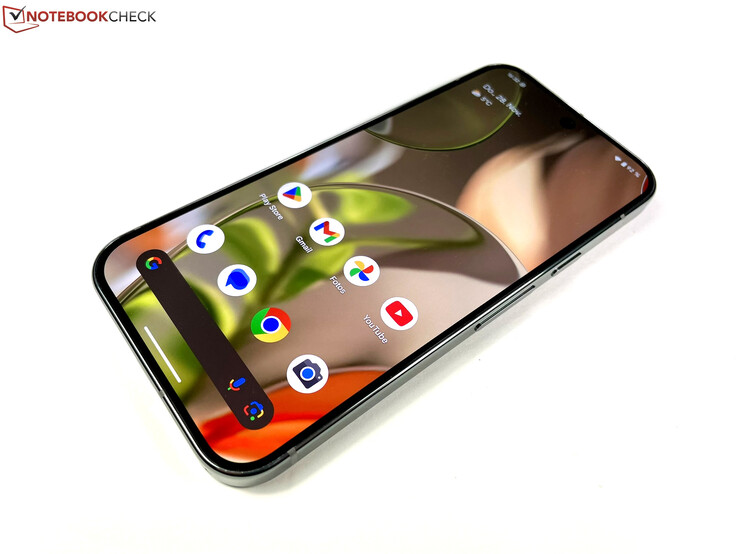

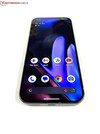



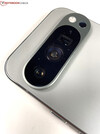
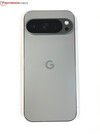

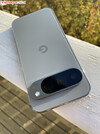





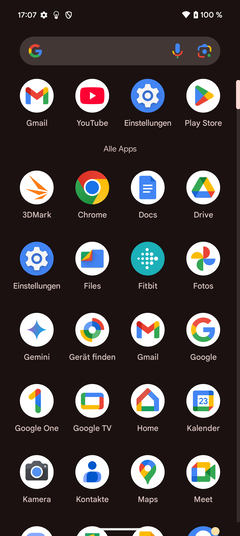

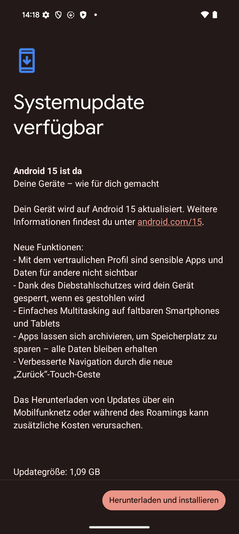


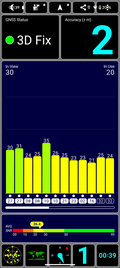
















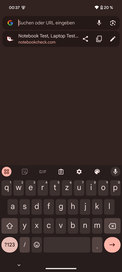
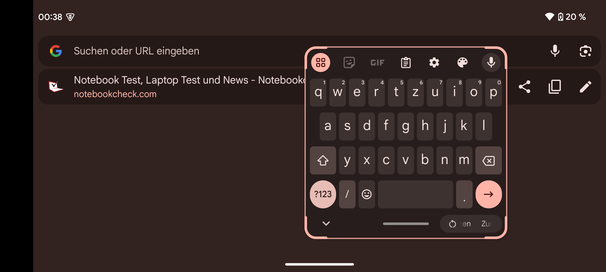

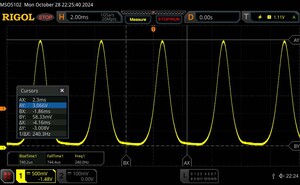








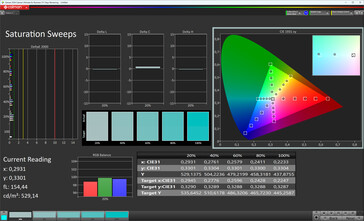
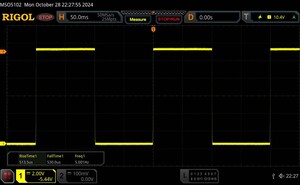
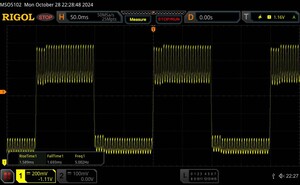
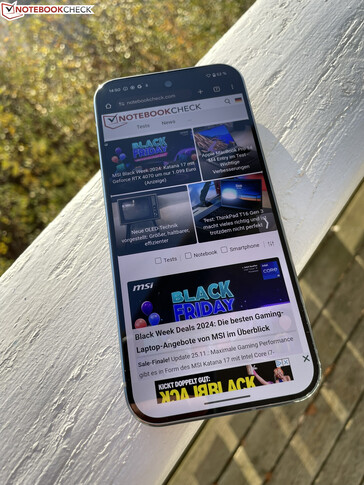
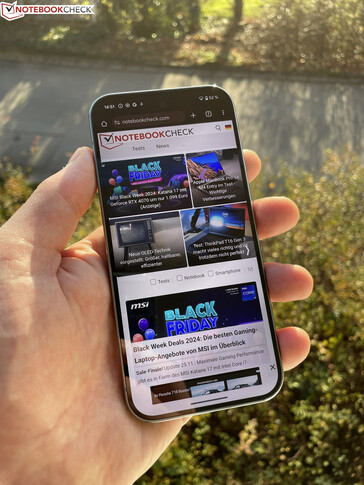

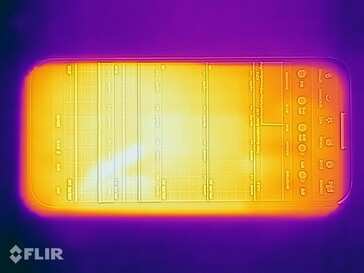
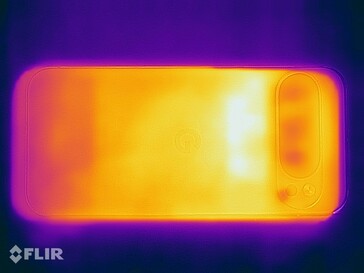
 Total Sustainability Score:
Total Sustainability Score: 

